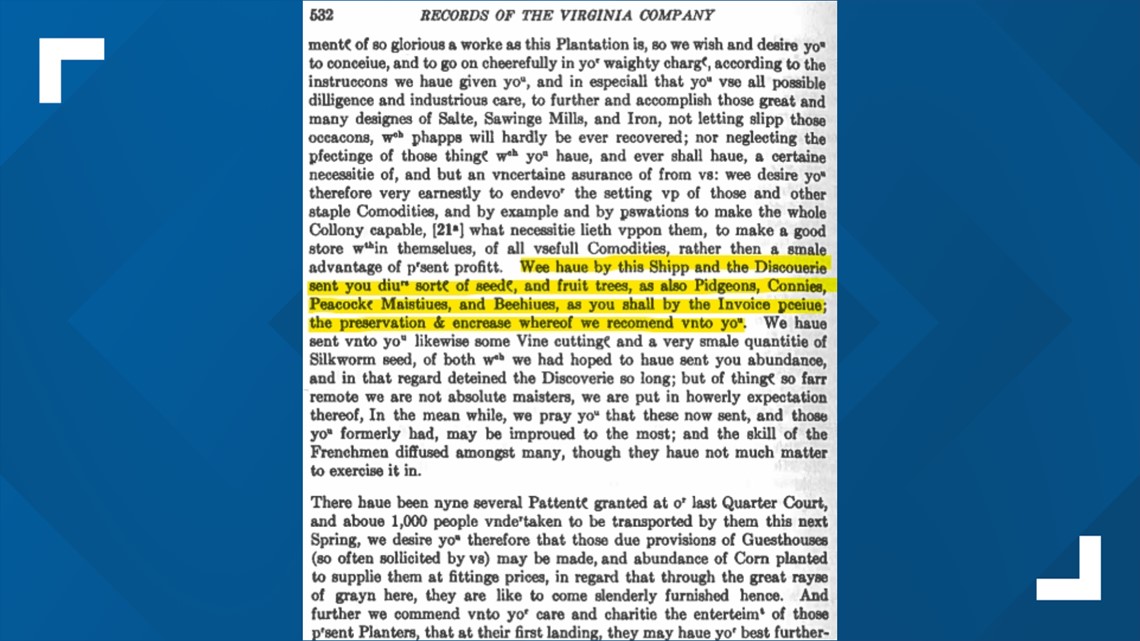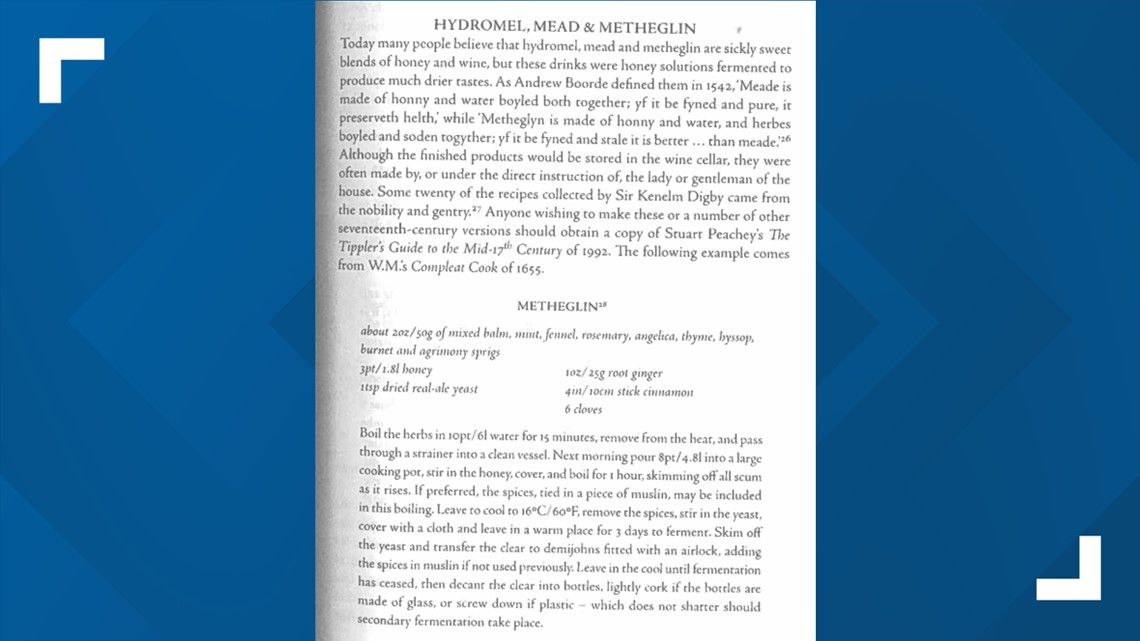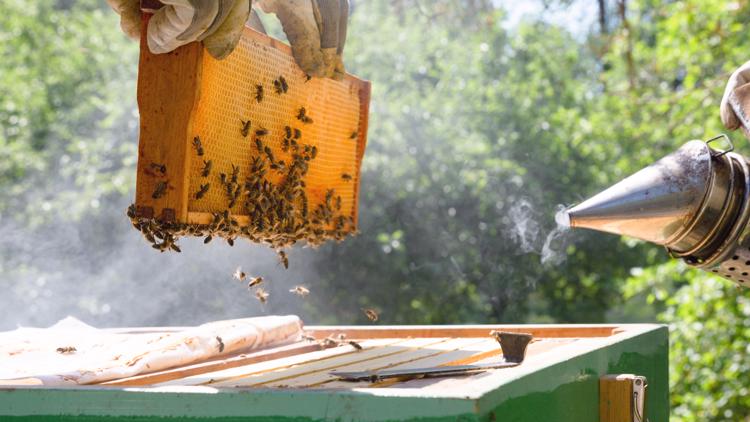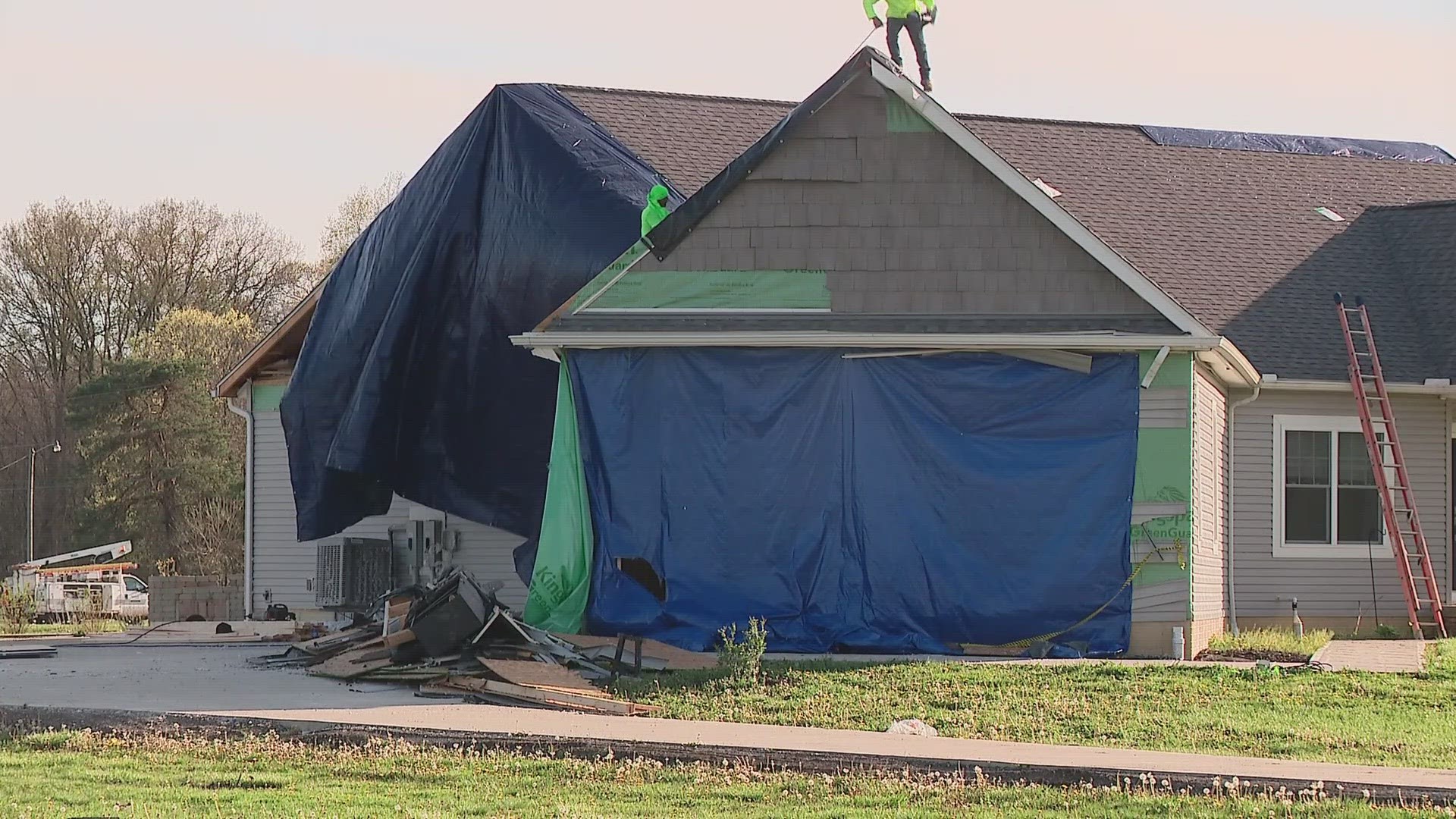JAMESTOWN, Va. — Author's note: The video above is from a separate story that first aired in March 2022.
May 20 is World Bee Day -- but May 20, 2022, is a particularly special one for Americans. It's the 400th year of honeybees!
There are several types of bees that are native to North America, but honeybees (the ones mostly responsible for pollinating our food and making the honey you can buy at the grocery store) don't come from around here.
Nancy Egloff, a historian with the Jamestown-Yorktown Foundation, said the first record of honeybees being brought to the colonies comes from Virginia Company of London shipping documents.
"Wee have by this Shipp and the Discoverie sent you diu sort of seed, and fruit trees, as also Pidgeons, Connies, Peacock Maistiues, and Beehives ... the preservation & encrease whereof we recomend unto yo," is how they put it.
The company known for establishing Jamestown packed the hives into a three-ship fleet that departed for Virginia in November of 1621, and arrived in April 1622.
"There's just one mention. We always want to build these stories around one mention," Egloff laughed. "Beehives coming in in 1622. But what happens to them? Big question mark."


There's not much information about what happened to the cargo after it shipped out. For one thing, the timing was terrible.
"They came just a couple weeks after a massive attack by the Powhatan Indians on the settlers," Egloff said.
On March 22, 1622, an attack killed about 350 settlers of the 1,200 total people in the colony. That was almost a third of their population.
It pushed the Virginia Company to order all outlying settlers to come together in eight fortified areas, one of which would have been Jamestown.
"It was a big blow, and it was a big surprise, so people are just really kind of scrambling," Egloff said. "I just can't see that it's a pretty, idyllic picture of people working with honeybees, when they're trying to survive."
There's also not much clarity about where the bees would have been dropped off.
While Egloff said Jamestown is the most likely destination, being the then-capital of the colony, all ships had to stop at Point Comfort (present-day Hampton) first. It's possible that some supplies could have been taken off the ship there.
"This is the debate we have with the 1619 arrival of the first recorded Africans -- were they offloaded down at Point Comfort, at the check-in site, or did they come up to Jamestown?" Egloff said. "The same question you could raise with anything. But, for the most part, the company and leadership was pretty much stationed at the capitol, at Jamestown, so probably these materials came to Jamestown."
She said Point Comfort escaped the brunt of the Powhatan attack, so the bees might have actually fared better if that was their final destination.
But at least we know that's when they first arrived... well, maybe.
"There is a document that was published a couple decades later, but it included a list of commodities -- and it's dated 1621 -- it's a list of commodities 'Growing and to be had in Virginia,' and it includes honey and wax," Egloff explained. "Now, however you interpret the words 'growing' and 'to be had,' whether the company was saying in 1621: 'We want to get honey and wax out of Virginia.'"
It's another layer to the mystery of honeybees' first years in North America.
After that 1621 shipping notice, for 26 years, there's no mention of honeybees, Egloff said. That's until an apiary pops up somewhere in the Virginia area in 1648.
"There was a man who had an apiary going on, and he had hives. He was making metheglin, which is a drink that you make from honey, and he was encouraging beehives."
That man said there were his domesticated bees, and some in the woods, making wax and honey naturally. So it's possible that by then, the honeybee had spread in North America.
We do know why they wanted bees. Honey, to use as a sweetener, and to make mead, and wax, for candles.
Metheglin -- the drink that first apiarist was making -- is a spiced mead. It's not something you can casually order at the bar in 2022, but it's still something you can find modern recipes for online.
Here's a recipe for how people would have made it back in the 1600s, from "Cooking and Dining in Tudor and Early Stuart England" by Peter Brears:


The Jamestown-Yorktown Foundation is celebrating the 400th year of bees with events Friday and Saturday.
The Jamestwon settlement gift shop will have events set up with the Savannah Bee Company, Silver Hand Meadery, Whitley's Peanuts, AR's Hot Southern Honey and St. George Brewing Company.
Visit the foundation's website for more details.



